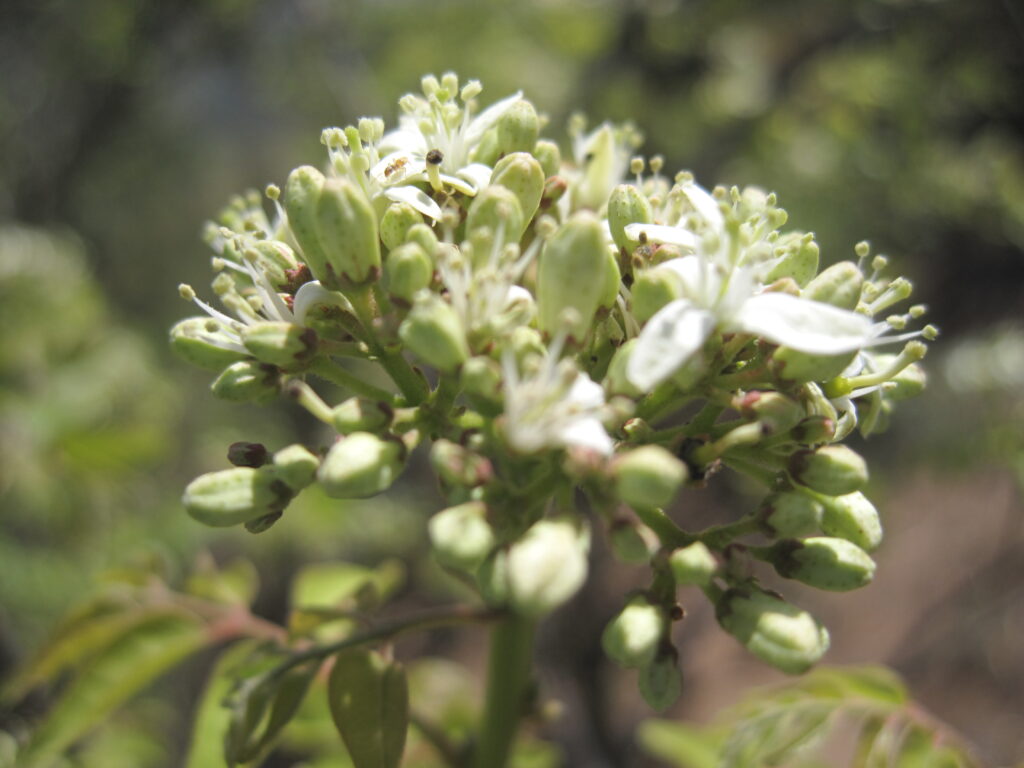Hindi: Kari patta करी पत्ता Marathi: Kudianim • Tamil: கரிவேப்பிலை Karivepillai •Malayalam: Kareapela Telugu: karepaku, karepeku, kari-vepa-chettu Kannada: ಗಂಧಬೇವು Gandhabevu, ಕರಿಬೇವು Karibevu ಕರಿಬೇವಿನ ಗಿಡ Kari bevinagida, ಸಾಂಬಾರಬೇವು Sambar bevu Bengali: Barsunga Oriya: lesunadando Assamese: Bishahari, Narasingha Mizo: Arpatil Sanskrit: कालशाकः Kalashaka Nepali: मेचिया साग Mechiyaa Saag, मिठो नीम Mitho Neem, नीम कौरी Neem Kauree, बौगुरेती Bauguretee, बोगाइनो Bogaaino, बोकिनी Bookinee Botanical name: Murraya koenigii
Family: Rutaceae (Lemon family)
Synonyms:Bergera koenigii, Chalcas koenigii.
Curry Leaf tree is a small or medium sized tree, most famous for its aromatic leaves that provide curry spice. Curry leaves are extensively used in Southern India and Sri Lanka (and are absolutely necessary for the authentic flavour), but are also of some importance in Northern India. It is a small tree, growing 4-6 m tall, with a trunk up to 40 cm diameter. The leaves are pinnate, with 11-21 leaflets, each leaflet 2-4 cm long and 1-2 cm broad. They are highly aromatic. The flowers are small white, and fragrant. The small black, shiny berries are edible, but their seeds are poisonous. Together with South Indian immigrants, curry leaves reached Malaysia, South Africa and Réunion island. When cooking, the leaves are generally used fresh off of the tree. Outside the Indian sphere of influence, they are rarely found. The yellow “curry powder” that is common in Western countries is actually not curry at all, but a mix of spices intended to mimic the true curry flavor. The yellow color comes from turmeric root.
Medicinal uses: Leaves are digestive, tonic, stimulant, rich in vitamin A and calcium. Leaves are also used for diarrhoea, dysentry and checking vomitting. Bark-paste is antisceptic, applied to skin eruptions. Root extract is taken for relief from renal pain.
Leaves are digestive, tonic, stimulant, rich in vitamin A and calcium. Leaves are also used for diarrhoea, dysentry and checking vomitting. Bark-paste is antisceptic, applied to skin eruptions. Root extract is taken for relief from renal pain.

Murraya koenigii 
Murraya koenigii
Leave a Reply